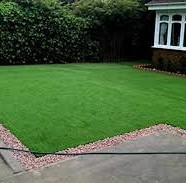
Using artificial grass for your home has several advantages. It is more affordable and realistic than ever before, and can be used in all types of environments. For example, it can be used in shaded gardens, as a playground carpet, or to cover urban rooftops and balconies. It can also be used for eco-friendly alternative to natural grass. Fortunately, more manufacturers are turning to this product. Read on to learn about the benefits and drawbacks of artificial grass.
One of the biggest advantages of using artificial grass is its environmental benefits. Compared to natural grass, artificial turf does not require water, which means you’ll save money on water bills. In addition, you’ll be able to enjoy the beauty of a lush, green lawn without the hassles of watering, mowing, and maintenance. Unlike real grass, artificial turf does not emit harmful gases or microplastics into the air. This is particularly important if you live in an area that is prone to extreme heat or cold.
Before you install an artificial grass, you’ll want to know what type of sub-base will be best for the area in which you plan to install it. There are several things to consider when installing an artificial grass surface, and not all of them are equally important. To start with, you should make sure the area is level. If the space is uneven, you might have to use landscape anchors to help keep it stable. In addition, the sub-base needs to be able to drain.
If you have pets, you may want to purchase artificial grass with antimicrobial properties. A good product made by Ideal Turf has this antimicrobial backing. This will help prevent the growth of germs, bacteria, and pet urine odor. This will also protect your lawn from the harmful effects of the sun. If you have pets, the antimicrobial properties are especially important. However, it is not possible to guarantee a 100% watertight surface.
The gauge of your artificial grass will depend on its density and the type of infill that you use. The higher the face weight, the better quality the product is. A higher face weight is more durable, and it provides a softer walking surface than a lower one. Another important factor to consider is the pile height, or how long the fibers are. Short pile height is best for high traffic areas, while long pile height is better for luxurious front yards.
If you choose to lay your artificial grass over existing grass, you must ensure that the surface is clean and free of weeds. Moreover, installing artificial grass over existing grass can lead to drainage issues and uneven surfaces. These factors will affect the durability of your new lawn. Make sure to level the surface with a base of about two to three inches of aggregate. An associate at Lowe’s will be able to help you choose the best base for your project. Once you have finished preparing the base, you can then begin installing the artificial grass.
